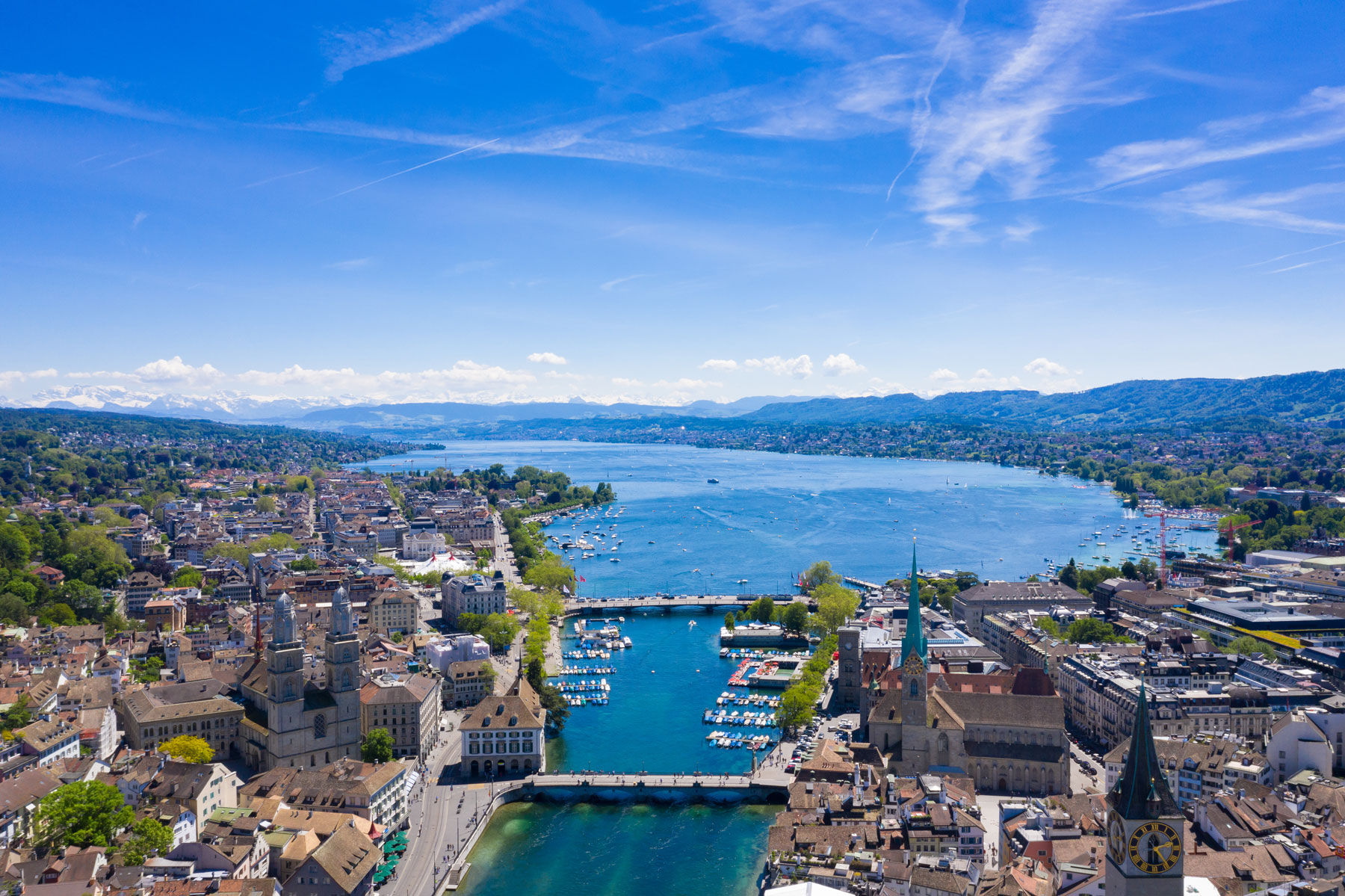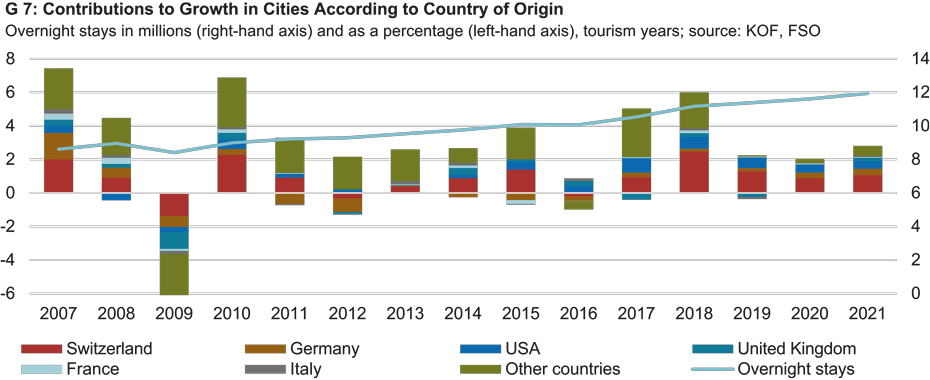Why City-break Tourism Is so Buoyant
- KOF Tourism Forecast
- KOF Bulletin
A boom in the cities, but stagnation in the mountains: Swiss tourism has developed very unevenly in recent years in geographical terms. A glance at the data shows that this is due to domestic tourists. The proportion of overnight stays spent by them in Swiss cities has been increasing at an above-average rate.

Swiss cities have been experiencing a genuine tourism boom for some time now, recording more than 14 million overnight stays during the tourism year 2018; this represents an increase of 35% compared to 2006. Over the same period, alpine and other areas have suffered from foreign competition, in particular as a result of the strong franc. Figures for overnight stays in these areas trended in the main sideways between 2006 and 2018, although the situation has recently improved somewhat (see graph G 6).
The tourism industry is still experiencing the most dynamic growth in the cities. However, the increases are not attributable to foreign tourists. Overnight stays by domestic visitors have risen by 45% since 2006, and hence at a higher rate than overnight stays in cities in general. In addition, figures for overnight stays in cities have seen strong growth not only in the summer months but also during the winter season. What are the reasons for this tourism success for cities?
1. Changes to visitor structure
The visitor structure of foreign tourists in Switzerland has changed considerably over the last ten years. The various increases in the value of the franc compared to the euro have considerably dampened demand from eurozone visitors. For example, overnight stays by tourists from Germany fell from 5.7 million in 2006 to 3.9 million in 2018 – a drop of 32%. At the same time, the number of overnight stays by US tourists grew by 35% over the same period.
Strong growth rates have also been posted for other so-called distant markets, including above all China, India and the Gulf states. Since these visitors have different preferences for urban or rural areas, the change in visitor structure has resulted in a shift of overnight stays towards the cities. Graph G 7 shows that the other countries (including in particular distant markets) and domestic tourists have been the largest drivers of growth.
2. Growth in business tourism
A further reason for the high growth in cities may most likely be found in business and conference tourism. Business tourism is concentrated above all on urban areas. If it grows more strongly compared to other forms of tourism, this will result in a shift in the share of overnight stays in favour of cities. The trend following the abrupt fall in the value of the franc in 2015 shows that, in contrast to the position for private tourism, (foreign) business tourism has been less responsive in Switzerland to variations in the exchange rate. As a result, business tourism appears to have bolstered the tourism industry in the cities during difficult times. However, business tourism grew less strongly than private tourism in 2017 and 2018
3. City breaks in vogue
Finally, city breaks appear to have been in fashion for some time. This is also apparent from the fact that the number of overnight stays in cities has increased considerably in recent years, including in particular stays by domestic tourists. As a result, the average duration of hotel stays has fallen, whilst last-minute bookings have increased. A glance across the border shows that the increasing attractiveness of cities is not restricted to Switzerland. Whilst the number of overnight stays in Vienna increased by more than 60% between 2006 and 2018, figures have been largely stagnating in the other Austrian federal states.
Conclusion: city break tourism has been booming in Switzerland for some time already, with figures for overnight stays growing more strongly than in other areas. This trend can be observed in a number of European countries. The largest contributions to demand in Switzerland come from the strongly growing distant markets as well as domestic tourism. Business tourism only appears to be playing a marginal role. Having been stimulated by the robust demand, the range of accommodation on offer is being constantly expanded in the cities. There are therefore a number of indications that the trend in city break tourism will continue to operate into the future.
A comprehensive version of this analysis can be found in the current KOF Tourism Forecasts.
Contact
No database information available

